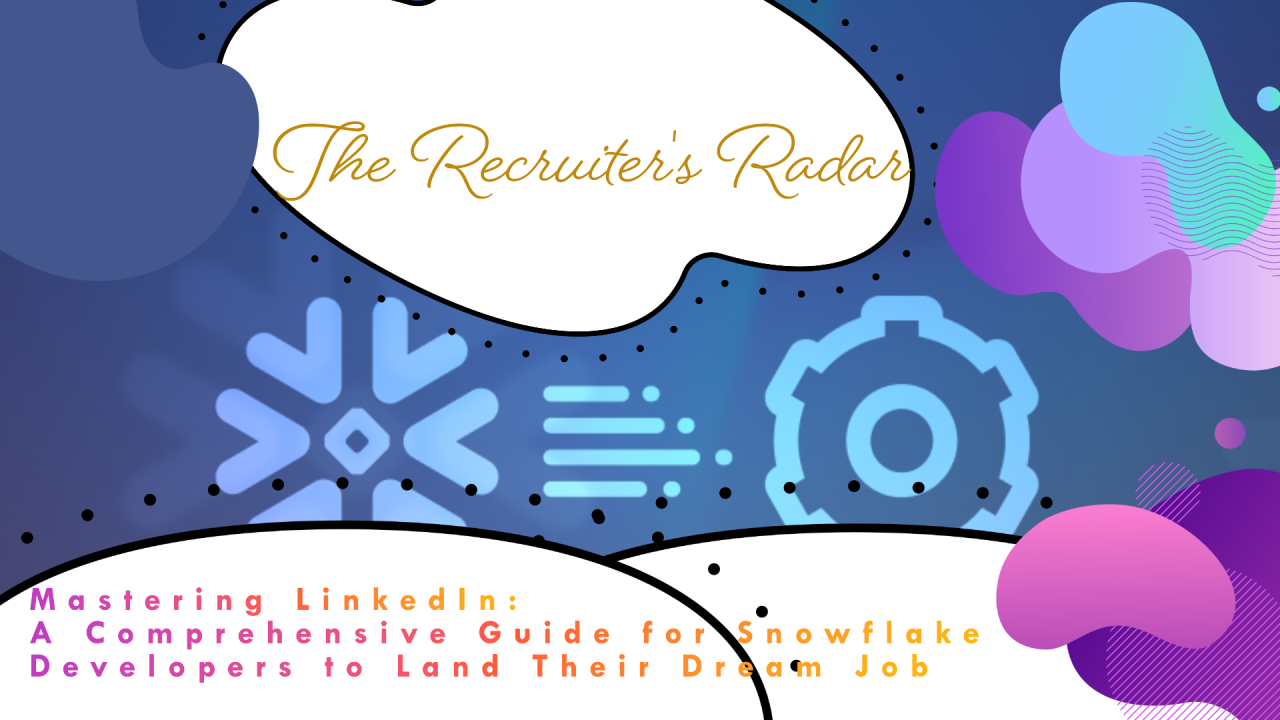
Mastering LinkedIn: A Comprehensive Guide for Snowflake Developers to Land Their Dream Job
KRISHNAKANT K.
Top 1% Recruiter | Career Branding Specialist | ATS-Optimized CV Writing & LinkedIn Optimization | Helping You Make the Right First Impression
As a Snowflake developer, leveraging LinkedIn effectively can significantly enhance your job search and professional networking. Here’s a step-by-step guide on how to optimize your LinkedIn presence and increase your chances of landing your dream job.
Step 1: Optimize Your LinkedIn Profile
1. Professional Profile Picture
2. Compelling Headline
3. Engaging Summary
4. Detailed Experience Section
5. Skills and Endorsements
6. Recommendations
Step 2: Build and Expand Your Network
1. Connect with Peers
2. Engage with Content
3. Join Relevant Groups
领英推荐
Step 3: Showcase Your Expertise
1. Share Content
2. Write Articles
3. Create a Portfolio
Step 4: Job Searching on LinkedIn
1. Use Job Alerts
2. Apply Strategically
3. Engage with Recruiters
Step 5: Prepare for Interviews
1. Research Common Interview Questions
2. Showcase Problem-Solving Skills
3. Ask Insightful Questions
Conclusion
By mastering your LinkedIn profile and strategically networking, you can effectively position yourself as a sought-after Snowflake developer. Remember, consistency is key. Regularly engage with your network, share your insights, and stay active in relevant communities. With dedication and a proactive approach, you’ll be well on your way to landing your dream job in the world of Snowflake development. Good luck!